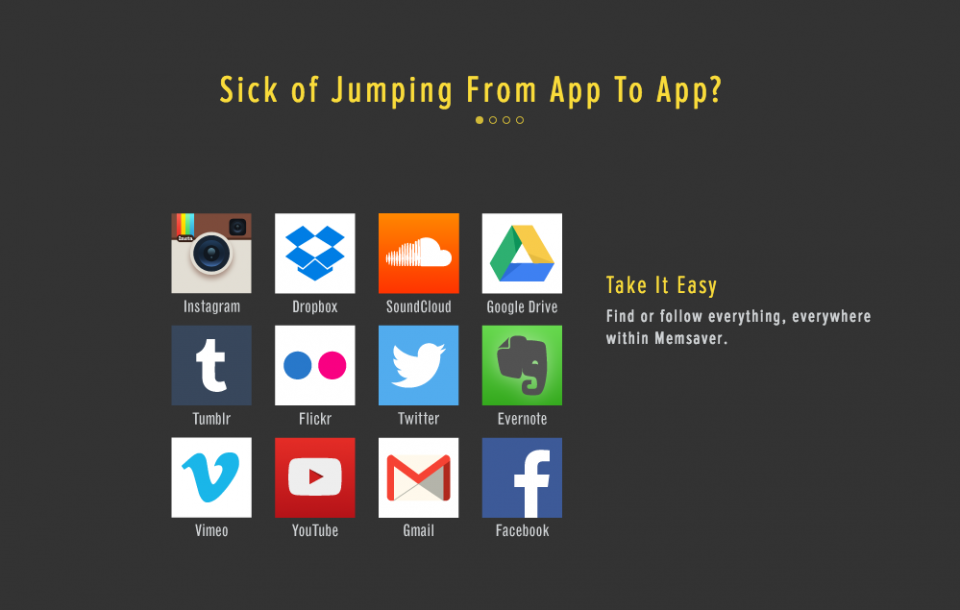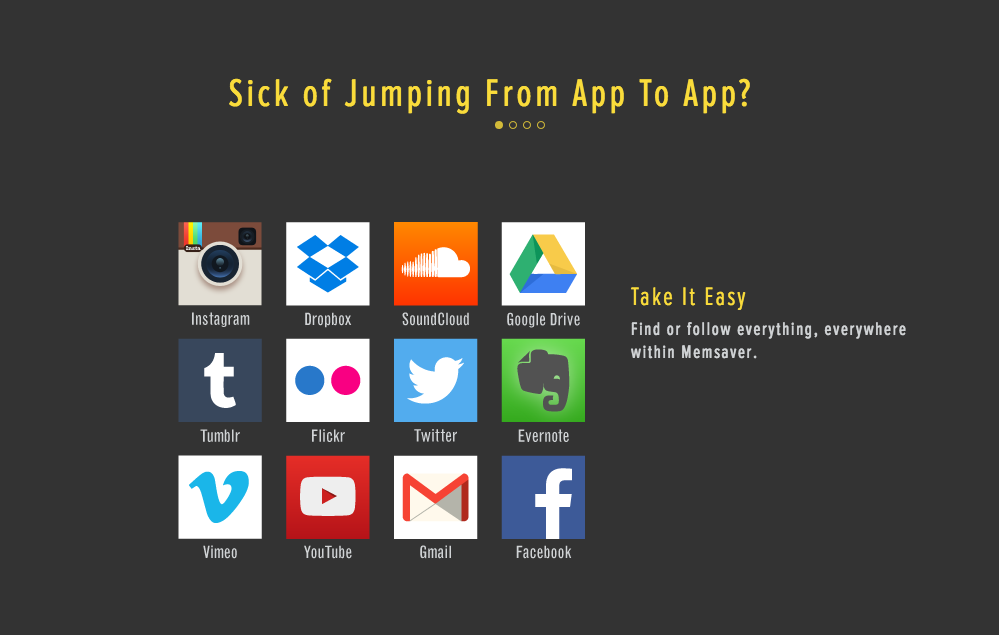A Single Source For Digital Content, In A World Of Data Overload
The average U.S. individual online time spent with social media is estimated at 1.77 hours every day – split between an average of four active accounts. This is growing rapidly, and as such has contributed to an explosion of available digital content and information sharing.
Facebook users send 31.25 million messages and view 2.77 million videos a minute.
Over 300 hours of video is uploaded to YouTube every minute.
There are 6,000 tweets per second and
500 million tweets per day.
100 billion emails are sent per day.
It has furthermore been reported that the human attention span is reducing, now under 8 seconds, which is less than a goldfish. The ability to multi-task has however reportedly improved, as consumers adapt to a fragmented world of constant online stimuli. With a wealth of information and increased time spent multi-tasking between multiple accounts this can mean some content is quickly overlooked or lost.
Memsaver’s integrated application provides a hub for this information – allowing users to save their favorite content, create lists and share information, looking to drive improved online experiences.

We spoke to James Hare, CEO and founder of Memsaver to find the story behind the creation of this software, and his views on our developing online habits.
James, what current trends do you see in the realms of data and social networking?
Right now, we are in a golden age of apps for news discovery, social networking and cloud storage. But trying to find and curate the things we actually value in all that data is a total disaster. Most people pull their online content from a variety of platforms that have no way of communicating with each other.
This makes it very difficult for the average internet user to save all of the content that they value. Cloud storage and social media have dramatically improved how we collaborate with friends and colleagues, but they have also lead to a surge of data meaning often your favorite content could be overlooked, or quickly forgotten.
How does Memsaver look to solve the issue of data overload?
Memsaver is an online hub that allows users to save all of their favorite online content- email, social media posts, photos, and files- in one place. What makes Memsaver special is that it synchronizes across 12 apps- Facebook, Twitter, Instagram, Flickr, Soundcloud, YouTube, Tumblr, Google Drive, Gmail, Dropbox, Vimeo, and Evernote- so you don’t ever have to worry about losing online content again, even if comes from a bunch of different sources.
Memsaver creates a private space for users to collect and interact with their most important memories. Our service means a user can filter out the noise to view and republish their favorite content, no matter where the original data lives. It’s an easy way to find and follow everything, everywhere.
How did you come up with the idea for Memsaver?
I was inspired to create Memsaver whilst participating in a 10-day meditation retreat. During this time, I was banned from going online or using technology. With no distractions, my thoughts turned to how
much of our online presence had been compartmentalized into silos that don’t communicate with each other. I realized that that there was no reliable system that can pull together information from across various platforms into one simple place. I saw this as a massive problem and the underlying cause for why so much important information gets lost. This is how I came up with the idea of Memsaver. I wanted to build a platform that could curate collections of my favorite online memories in one screen.
What are your plans for the future development of Memsaver?
Right now, we are focused on expanding the functional capabilities of our platform. We have built both a mobile and web app in English, German, Spanish, French, Italian, Chinese, Korean, and Japanese. Memsaver currently works across 12 different platforms, and we are working to expand this as well. As online tendencies continue to evolve and fragment we aim to support this with constant integrations. It is in this way we plan to act as a net, ensuring improved digital experiences – and making sure that the best parts are never lost.


